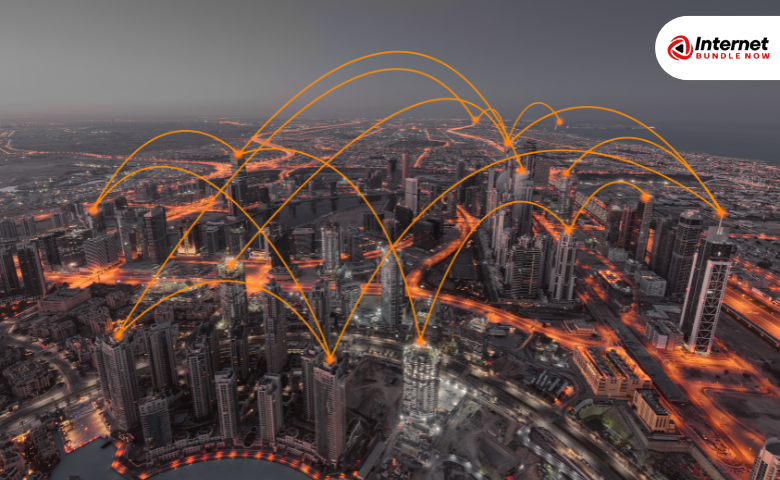In today's digital world, understanding how data travels through the internet is essential. At Internet Bundle Now, we recognize the importance of this knowledge, not only for our customers but for anyone curious about the intricacies of Internet communication. Let's embark on a journey through the complex but fascinating world of data transmission.
Introduction to Internet Data Transmission
Data transmission is the process of sending data from one place to another. The internet is a vast network of interconnected devices and systems that work together to deliver data efficiently and reliably. The internet structure can be likened to a giant web, where every node or point is linked to others, enabling a seamless flow of information.
Basic Concepts
Data on the internet is transmitted in small chunks, known as packets. Each packet contains a portion of the data and information about its destination. This method, known as packet switching, ensures that data can take the most efficient route through the network. Transmission Control Protocol (TCP) and Internet Protocol (IP) are fundamental to this process. TCP ensures that packets are delivered accurately and in the correct order, while IP handles the addressing and routing of packets. Additionally, the User Datagram Protocol (UDP) offers a faster alternative to TCP, though it lacks some reliability features.
Network Layers and Models
To better understand how data travels, looking at network models is advantageous. The OSI (Open Systems Interconnection) model divides network communication into seven layers, from the Physical Layer (which deals with the actual hardware) to the Application Layer (which interfaces with end-user applications). Similarly, the TCP/IP model, which is more practical for the Internet, includes four layers: Network Interface, Internet, Transport, and Application. These models help diagnose network issues and design efficient network systems.
Data Transmission Process
When you send a request over the internet, it travels from your device to a destination server. This journey involves multiple steps. Data packets are routed through intermediate devices, such as routers and switches, which direct the packets along the most efficient path. IP addressing is crucial here, as it uniquely identifies each network device, ensuring that packets reach the correct destination. IPv4 and IPv6 are the two primary versions of IP addressing, with IPv6 providing a larger address space.
Network Devices and Components
Several devices are involved in the transmission of data. Routers, for example, manage the traffic between different networks, ensuring that packets are directed to their intended destinations. Switches, on the other hand, connect devices within the same network and handle the internal traffic. Modems convert digital data into signals travelling over telephone lines or cable systems. Firewalls are essential for security, as they monitor and control incoming and outgoing traffic to protect networks from threats.
Internet Infrastructure
The backbone of the internet comprises Internet Service Providers (ISPs), data centers, and Content Delivery Networks (CDNs). ISPs, like Internet Bundle Now, provide the necessary connections to the Internet Plans. Data centres house the servers that store and manage data, while CDNs distribute content closer to users to improve speed and reliability.
Transmission Media
Data travels over various types of media. The wired transmission uses fibre optic and copper cables to carry data across distances. Fibre optics offer high-speed, high-capacity connections using light signals, while copper cables (like Ethernet) are standard for shorter distances. Wireless transmission, including Wi-Fi and cellular networks, uses radio waves to transmit data, offering flexibility and mobility.
Data Encapsulation and Decapsulation
Data encapsulation involves wrapping data with the necessary headers and trailers to prepare it for transmission. Decapsulation is the reverse process in which the data is extracted from the wrappers upon arrival. This ensures that the data can be accurately interpreted and delivered.
Error Handling and Retransmission
Errors can occur during transmission, so mechanisms are in place to handle them. Techniques such as checksums and Cyclic Redundancy Check (CRC) detect errors. For correction, protocols like Automatic Repeat reQuest (ARQ) request the retransmission of faulty packets, while Forward Error Correction (FEC) adds redundant data to correct errors without retransmission.
Latency and Bandwidth
Two crucial aspects of data transmission are latency and bandwidth. Latency refers to the delay before a data transfer begins following an instruction, while bandwidth measures the amount of data that can be transferred in a given time. Factors affecting these include network congestion, distance, and the quality of the transmission medium. Optimization techniques help improve both latency and bandwidth.
Security Measures
Securing data during transmission is vital. Encryption methods, both symmetric and asymmetric, protect data from unauthorized access. Authentication ensures that data is sent and received by the intended parties. Firewalls and Intrusion Detection Systems (IDS) add extra layers of security by monitoring and blocking suspicious activities.
Emerging Technologies
The field of data transmission is continually evolving. Software-Defined Networking (SDN) and Network Function Virtualization (NFV) transform network management and flexibility. Additionally, the rollout of 5G networks promises faster speeds and lower latency, paving the way for new applications and innovations.
Case Studies and Real-World Examples
To illustrate these concepts, consider how streaming services deliver high-quality video to millions of users. This involves complex data transmission processes, including efficient routing and content delivery. Similarly, VoIP communications rely on fast, reliable data transmission for clear voice calls.
Conclusion
Understanding how data travels through the internet reveals the intricate and efficient systems that support our digital lives. The process is both complex and fascinating, from the journey of data packets to the technologies ensuring secure and rapid transmission. At
Internet Bundle Now, we're committed to providing high-quality internet services that harness these technologies to deliver the best possible experience to our customers.

George
How Does Data Travel Through the Internet?